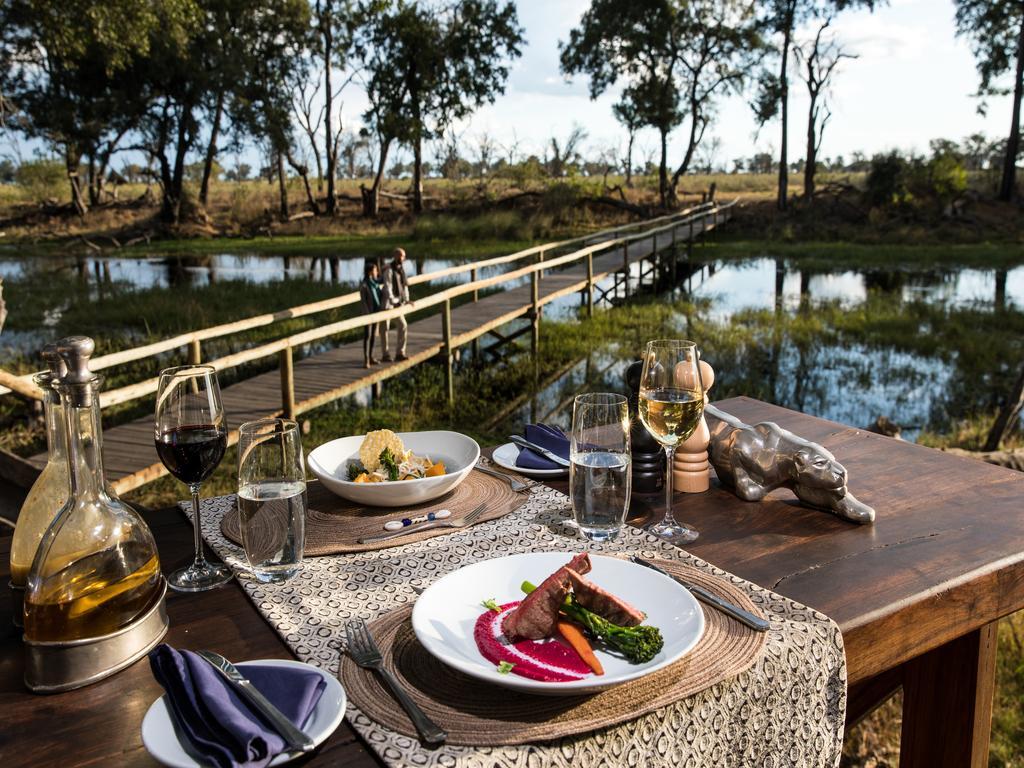The Beginner’s Guide to African Food and Flavors

When most travelers picture an African safari, their minds go to lions on the hunt, elephants at a waterhole, or sunsets that drench the savanna in gold. Rarely do they imagine the dining table — and when they do, there’s often a misconception that the food will feel foreign or unfamiliar.
The truth? Safari dining is one of the most pleasant surprises of the entire journey. In the heart of the bush, far from city kitchens, you’ll find chefs who are highly trained, endlessly creative, and deeply committed to making every meal an experience. These aren’t hastily prepared “camp” meals. They’re thoughtfully crafted, flavor-rich dishes that could easily be served in a high-end restaurant — but with the added magic of the African wilderness as your backdrop.
Setting the Record Straight
Across Africa’s safari camps and lodges, chefs undergo professional training, often at renowned culinary schools. Many have international experience, bringing techniques and presentation styles learned abroad back to their home country or region. The result is menus that offer the comfort of familiar favorites while introducing you to the flavors and ingredients of Africa.
You might wake to the aroma of freshly baked bread and buttery pastries, served alongside seasonal fruits and fresh-pressed juice. Lunch could be a crisp garden salad with just-picked vegetables, a roast chicken seasoned to perfection, or a chilled soup bright with herbs. And dinner? Think tender grilled beef fillet with red wine jus, or perfectly seared fish drizzled with a tangy citrus sauce — each plated with the care you’d expect from a fine dining establishment.
Flavors of Africa
While you’ll always find plenty that’s familiar, chefs love weaving in touches of local tradition. In Botswana, you might taste pap — a comforting maize porridge — served with a rich tomato relish. In South Africa, perhaps bobotie, a spiced ground meat dish topped with a golden egg custard. Along the coast, freshly caught seafood is often paired with coconut rice or peri-peri sauce, a fiery, flavorful nod to Portuguese influence.
Even these African-inspired elements are thoughtfully balanced so that every traveler, regardless of their palate, can enjoy them. Often, it’s the subtle spices, the brightness of fresh herbs, or the story behind a recipe that make the dish memorable.
Opportunities to Try Traditional Foods
If you’re curious about tasting more traditional African dishes, you’ll find plenty of opportunities — sometimes woven into the daily menu, and often available upon request. Camps are happy to prepare local specialties for guests who want to explore beyond the familiar.
You might sample nyama choma, East Africa’s beloved grilled meat, or matoke, a savory plantain dish from Uganda. In southern Africa, chakalaka — a vibrant vegetable relish — might accompany your meal, or you could try sadza, a Zimbabwean staple similar to polenta.
These moments are a wonderful way to connect with your destination through its flavors. Each dish comes with a story — of regional traditions, seasonal harvests, or family recipes passed down for generations. Whether it’s part of a special tasting menu or a spontaneous kitchen request, these flavors can become some of your fondest safari memories.
Whole Food, High Quality
Safari kitchens take great pride in using fresh, seasonal, and often locally sourced ingredients. Many camps partner with nearby farms or grow their own produce, ensuring that fruits and vegetables are at their peak. Bread, muffins, and pastries are baked fresh daily; stocks and sauces are made from scratch; and even desserts often feature local specialties, like malva pudding or Amarula-spiked mousse.
The focus is on whole food — vibrant, nourishing, and beautifully prepared. It’s a dining style that leaves you feeling energized for the next game drive rather than weighed down.
Dietary Needs Handled With Care
Worried about food restrictions? Don’t be. Safari camps take dietary requirements seriously, whether it’s gluten-free, dairy-free, vegetarian, vegan, or specific allergies. Chefs will often meet with guests upon arrival to confirm needs and preferences, then tailor dishes so you never feel left out.
You might find gluten-free bread rolls warm from the oven, dairy-free desserts that are still indulgent, or plant-based meals that are as hearty and satisfying as anything else on the table.
Dining as Part of the Experience
On safari, dining isn’t just about eating — it’s about where and how you eat. You might have breakfast in the bush, with giraffes grazing in the distance. Lunch could be a picnic under a shady acacia tree, with a spread that appears as if by magic after your morning game drive. Dinners often take place under a canopy of stars, the night air filled with the sounds of the wild, the table lit by lanterns and candlelight.
These moments linger in memory long after you’ve returned home, adding a sensory richness to the story of your safari.
A Flavor to Remember
By the end of your journey, you’ll realize African safari dining isn’t about navigating unfamiliar foods — it’s about discovering the universal joy of a well-cooked meal, shared in extraordinary surroundings. With every bite, you taste not just the skill of the chef, but the care and hospitality that are hallmarks of the safari experience.
Come hungry, come curious, and leave with a new favorite dish — and perhaps a recipe or two to bring home.




